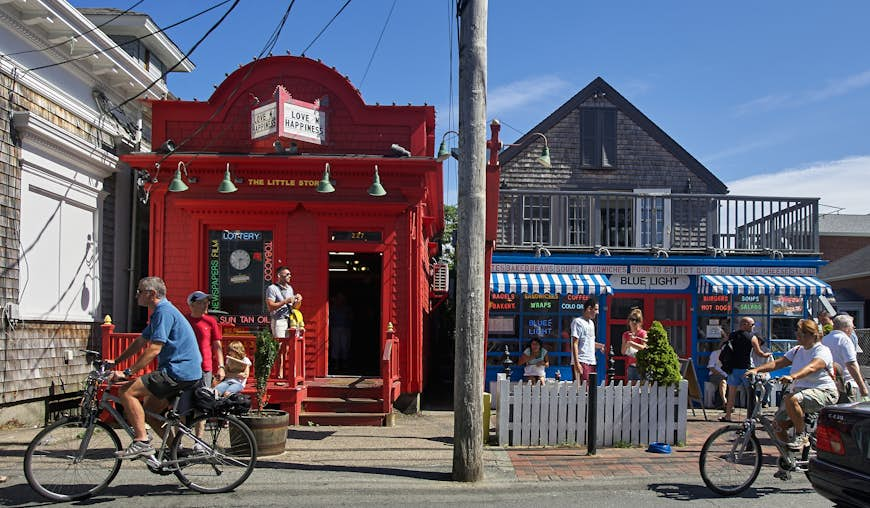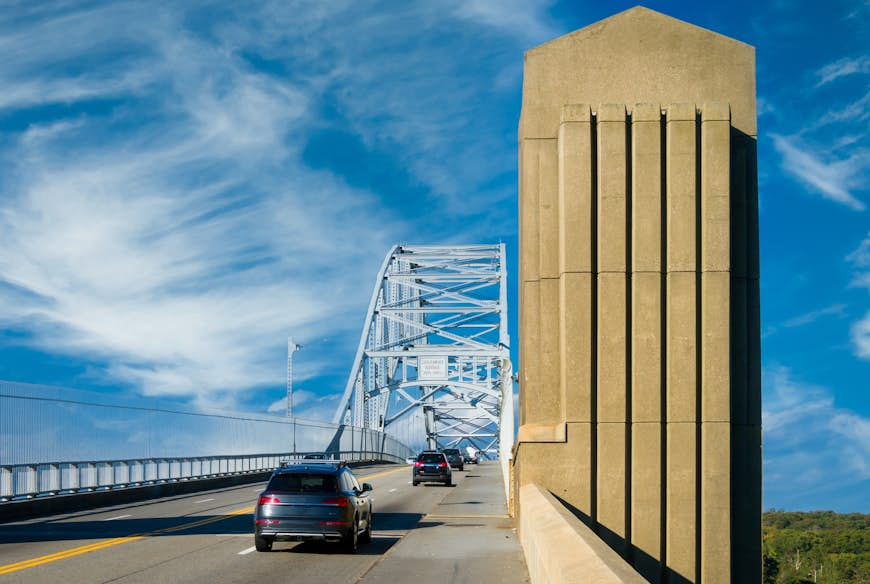Every summer, caravans of visitors clog Cape Cod’s single highway for a season of Wellfleet oysters, swimmable coastline and the vibrant LGBTIQ+ scene in Provincetown.
If you’re curious to learn how to best navigate Cape Cod and avoid the throngs of traffic, we’ve got you covered. Here are the best ways to get around the Cape.
Cars are a necessary evil
Car travel is by far the most straightforward way to get around the Cape. Using your own car or renting one will allow you to pack in the most activities, from walking the glittering Cape Cod National Seashore to letting loose at a Tea Dance in Provincetown (“Ptown”) to rolling up to a drive-in movie in Wellfleet.
Driving the historic “Old King’s Highway” – Route 6A – is a fantastic way to see 65 miles of the Cape, from Bourne to the tip of the peninsula.
There are a few drawbacks to driving, however. Only one highway serves the entire Cape (Route 6) which means this artery can get pretty congested. Avoid car travel on Fridays and Sunday afternoons during peak summer weekends if you can.
Parking will be challenging and expensive in the high season. The National Seashore will set you back $25 to park, but each beach has different fees.
If you’re only in town for a day or two, you can get away with using a ride-sharing service like Uber or calling a yellow cab.
Save some money by taking the bus
Public transportation is a great way to explore Cape Cod if you don’t have a car. Local trolleys and bus lines usually get you pretty close to where you need to go.
You can buy an unlimited day pass to ride the CCRTA bus for just $6, and seniors and persons with disabilities get fare reductions.
There are even Free Fare Fridays on some fixed bus routes, which will help stretch your travel fund. If cycling is part of your adventure, CCRTA buses are equipped with bike racks.
When your visit has ended, it is easy to grab a Peter Pan bus to Boston, Providence or New York. A one-way ticket from Provincetown to Port Authority will set you back about $60.

See more of Cape Cod by using a bike
With over 500 miles of coastline, Cape Cod is a dreamy destination for cyclists. Bring your own bike or rent from one of many conveniently located shops around the peninsula. Local buses and ferries take bike passengers, so there is plenty of room to get creative with your transportation itinerary.
Road biking is a good way to see the beaches and towns of the Cape, but there are also dedicated trails just for cycling.
Situated on the bay side of the Cape, the Cape Cod Rail Trail boasts over 20 miles of paved trail spanning Yarmouth to Wellfleet.
While a shorter ride (10.7 miles), the Shining Sea Bikeway is a safe, visually striking way to get from Falmouth to the next ferry out of Woods Hole. Grab a popover breakfast sandwich at Pie in the Sky Bakery while you wait. Rent from Corner Cycle or Art’s Bike Shop.

Enjoy a slower pace by taking a ferry
It would be a mistake to exclude ferry travel from your Cape Cod itinerary. In fact, one of the best ways to bypass the summer car traffic is to take a Bay State Cruise Company ferry to/from Boston. The boat docks in Ptown and the trip takes about 90 minutes.
Ferry travel makes sense for people without cars, people with cycling plans or those looking to spend significant time on the water or the Outer Cape. It’s also my favorite approach to coastal travel, since both the views and options within options for transportation are unbeatable.
Many treat the Cape as a jumping-off point to nearby islands, mainly Martha’s Vineyard and its smaller, much-storied counterpart – Nantucket. Once on the Cape, The Steamship Authority is your best resource for boat schedules, fares and parking information.
If you have a car, leave it in Falmouth and take the free shuttle to the Woods Hole ferry terminal to avoid getting a ticket on your way to the Vineyard. You can also drive it onto the ferry, but know that capacity is limited.
The Nantucket service out of Hyannis offers both a high-speed (1 hour) passenger ferry option and a more leisurely (2.25 hour) car ferry. Biking is the best way to get around this little paradise, so if you’re already cycling the Cape, add Nantucket to your itinerary.
